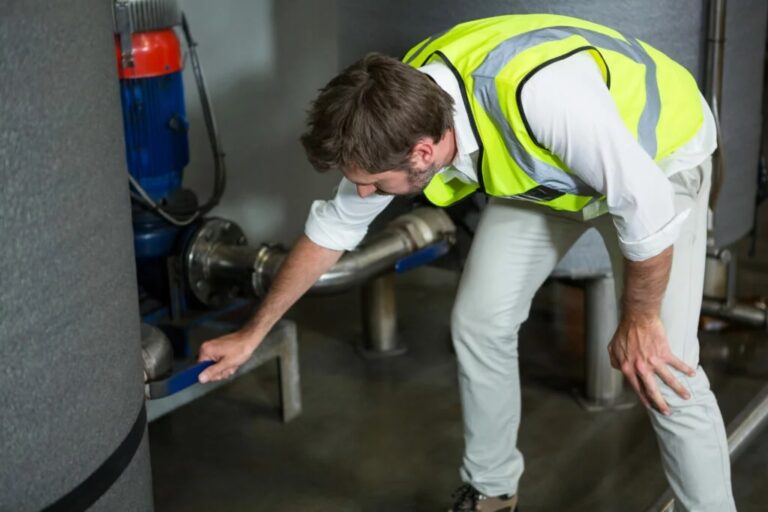
Creating a comfortable indoor environment is essential, not only for our well-being but also for the efficiency of our homes. Proper insulation and effective ventilation play pivotal roles in maintaining the desired indoor temperature and air quality, regardless of the weather outside. In this article, we’ll explore the benefits of insulation, take a look into the importance of ventilation, and discuss how to significantly enhance these elements.
Understanding Insulation: Its Importance and Benefits
Insulation serves as a protective layer that reduces heat transfer, especially through roofs, walls, and floors. This helps in keeping indoor temperatures consistent, resulting in a more comfortable living space. It’s particularly crucial in extreme weather conditions, preventing cold drafts in the winter and reducing heat ingress during summer.
Proper insulation reduces energy consumption by minimizing the need for heating and cooling systems to work overtime. This not only lowers utility bills but also reduces the overall carbon footprint of the home. Homeowners can enjoy both economic benefits and the satisfaction of contributing to environmental preservation.
The Role of Ventilation in Indoor Comfort
While insulation is critical for temperature control, ventilation is equally important for maintaining air quality and moisture levels inside a building. Effective ventilation removes stale indoor air and replaces it with fresh outdoor air, crucial for health and comfort. It helps eliminate pollutants, excess moisture, and odors, which can accumulate in poorly ventilated homes.
Poor ventilation can lead to several problems, including mold growth, respiratory issues, and an overall decline in indoor air quality. Moisture accumulation is a common issue in airtight spaces without adequate ventilation, leading to structural damage over time. Therefore, incorporating a well-designed ventilation system is essential for the longevity of the building and the health of its occupants.
How Professionals Can Optimize Your Insulation and Ventilation
A professional roofing company plays a crucial role in optimizing a home’s insulation and ventilation. These experts can assess current roofing systems to identify any inefficiencies or damages that might be impacting indoor comfort. For instance, during a roof inspection, experts can detect inadequate insulation or poor ventilation paths that could be rectified to improve thermal efficiency.
Roofing companies provide various services that contribute to better insulation and ventilation. They can install new roofs with built-in ventilation solutions such as ridge vents or soffit vents that enhance air circulation without compromising the home’s security or aesthetic appeal. When replacing or repairing a roof, these professionals ensure that the insulation is properly installed and meets the specific needs of the home based on its geographic location and climatic conditions.
By consulting with knowledgeable roofing professionals, homeowners can ensure that their insulation and ventilation systems are properly integrated and functioning optimally. This not only enhances indoor comfort but also extends the lifespan of the roofing system and improves the overall energy efficiency of the home.
Practical Tips for Homeowners to Improve Insulation and Ventilation
Homeowners have several straightforward measures to take that can boost their home’s insulation and ventilation effectiveness. Regular maintenance checks are essential. These checks can help identify any gaps or leaks in insulation, especially around windows, doors, and other openings where air might escape. For those comfortable with DIY projects, adding weatherstripping or caulking around these areas can be an effective way to improve insulation and reduce energy costs.
Consider the attic and basement as well, which are common areas where insulation may be insufficient. Upgrading insulation in these areas can prevent heat loss in winter and keep your home cool in summer. For ventilation improvements, ensure that vents are not blocked by furniture or other objects. This simple step helps maintain a clear path for air to circulate effectively.
Another tip is to use exhaust fans in kitchens and bathrooms to expel moisture-laden air directly outside, preventing excess humidity from affecting other areas of the home. Integrating ceiling fans can also assist in creating a more even distribution of air, enhancing comfort levels in every room.
The Impact of Climate on Insulation and Ventilation Needs
Climate plays a decisive role in determining the specific insulation and ventilation needs of a home. In colder regions, for instance, more robust insulation is essential to prevent heat from escaping. Homeowners might consider spray foam insulation, which provides an airtight seal, making it one of the most effective insulation methods for keeping heat in during harsh winters.
In contrast, homes in hotter climates might prioritize ventilation to expel warm air and reduce reliance on air conditioning systems. Here, natural ventilation strategies, such as strategically placed windows and vents that promote cross breezes, can be particularly effective. Radiant barriers in attics can also reflect heat away from the property, helping to maintain cooler indoor temperatures without overworking air conditioning systems.
For those living in areas with moderate climates, a combination of adequate insulation and natural ventilation typically suffices to maintain comfort without excessive energy use. Homeowners in such regions should focus on ensuring that their insulation and ventilation systems are optimized to adjust easily between seasonal changes without requiring significant modifications.
Ensuring Lasting Comfort and Efficiency
Both the insulation and ventilation systems in your home are fundamental to creating a sustainable and comfortable living environment. Regular evaluations and updates to these systems not only contribute to a more pleasant home life but also bring about significant financial savings through reduced energy bills. Most importantly, they contribute to a healthier lifestyle by improving indoor air quality and maintaining a comfortable indoor climate.
Ensuring your home is well-insulated and properly ventilated is an ongoing process that requires attention to detail and an understanding of your specific environmental needs. Consulting with professionals can provide tailored advice and solutions that dramatically enhance the effectiveness of your home’s insulation and ventilation systems.
By taking proactive steps towards optimizing these systems, homeowners not only safeguard their comfort but also contribute to the broader goal of energy efficiency and environmental sustainability. Remember, a comfortable home is a continuous investment in your well-being and future.






